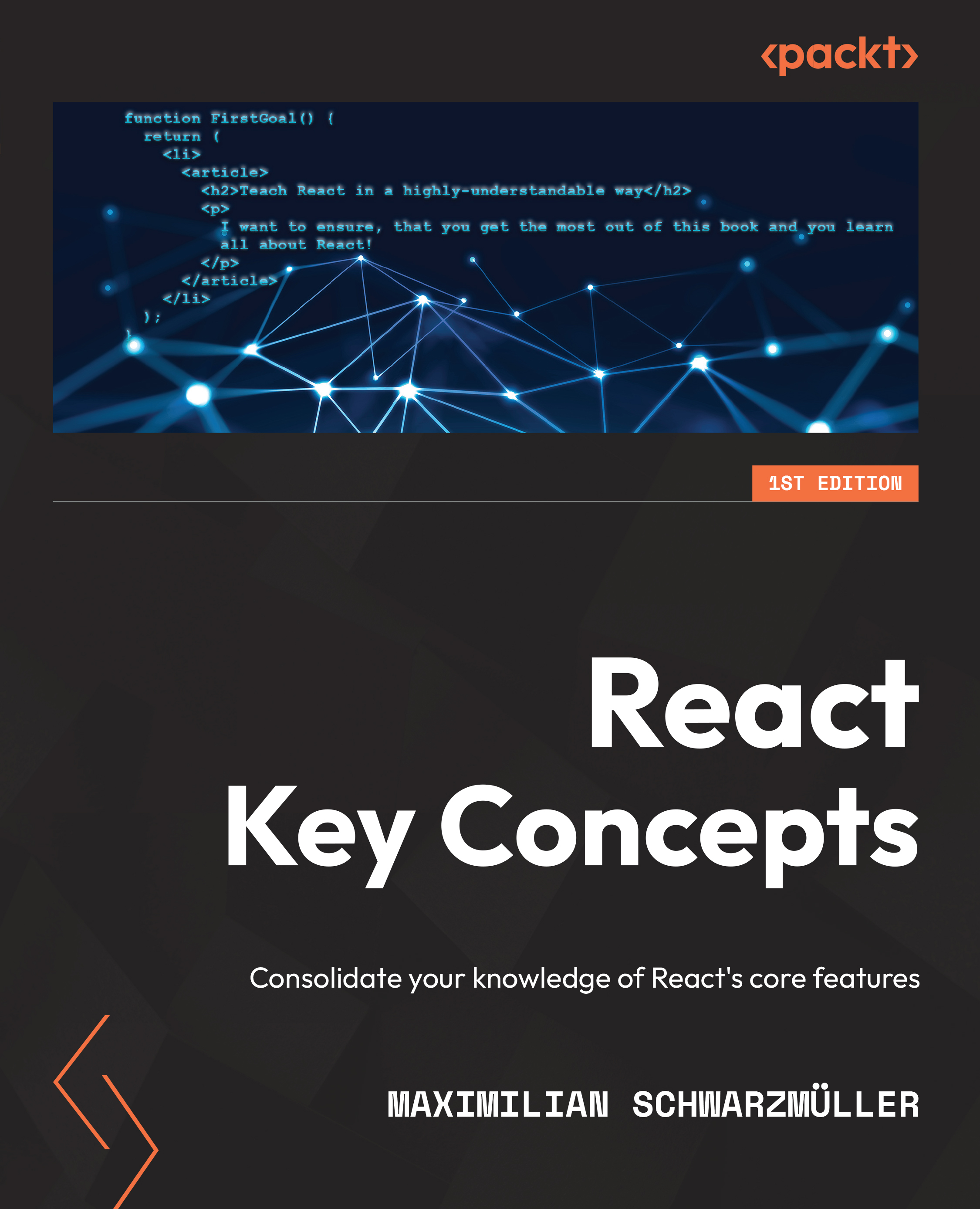In the preceding chapter, you learned how to use React Router to load different components for different URL paths. This is an important feature as it allows you to build multipage websites while still using React.
Routing is a crucial feature for many web applications, and React Router is therefore a very important package. But just as most websites need routing, almost all websites need to fetch and manipulate data. For example, HTTP requests in most websites are sent to load data (such as a list of products or blog posts) or to mutate data (for example, to create a product or a blog post).
In Chapter 8, Handling Side Effects, you learned that you can use the useEffect() Hook and various other React features to send HTTP requests from inside a React application. But if you're using React Router (specifically, version 6.4. or higher), you get some new, even more powerful tools for working with data.
This chapter will explore which new features are added...



 Free Chapter
Free Chapter

